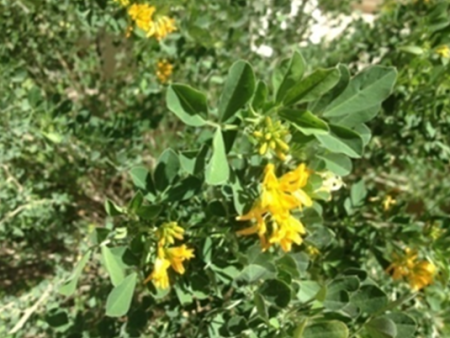
Objective:
Medicago arborea, a naturalized species, was selected for its pastoral and high ecological interest: it is a nitrogen fixer and cold, drought, and salt-tolerant plant species (Sibole et al. 2003). It tolerates frost conditions and low temperatures as well as drought conditions and high temperatures. It’s an important species regarding its symbiosis with nitrogen fixation bacteria. The species had always demonstrated its importance as a forage species and its quality in feeding the animal. The main objective of this work is to master the techniques for multiplying and conserving this species.
Context:
M. arborea is a forage species very appreciated by cattle. It has good quality as it is too rich in nitrogen and proteins (nitrogen matter constitutes about 20% of its dry matter). Its digestibility is more important than many other forage species like Atriplex nummularia as well as d’Acacia cyanophylla. It has a great energetic value of 0.8 UF to 1.05 UF /kg of dry matter. This work was part of the ECOPLANTMED Project (www.ecoplantmed.eu)
Contacts:
Issam Touhami, issam_touhami@yahoo.fr, www.inrgref.agrinet.tn
Salma Sai-Kachout, salmasey@yahoo.fr, www.inrat.agrinet.tn
Hamdi Aouinti, hamdiiouinti@gmail.com, www.inat.tn
Abdelhamid Khaldi, khalditn@yahoo.fr, www.inrgref.agrinet.tn
Further information:
Le Houérou H.N. 2002. Multipurpose germplasm of fodder shrubs and trees for the rehabilitation of arid and semiarid land in the Mediterranean isoclimatic zone. Options Méditerranéennes, 37:1-118.